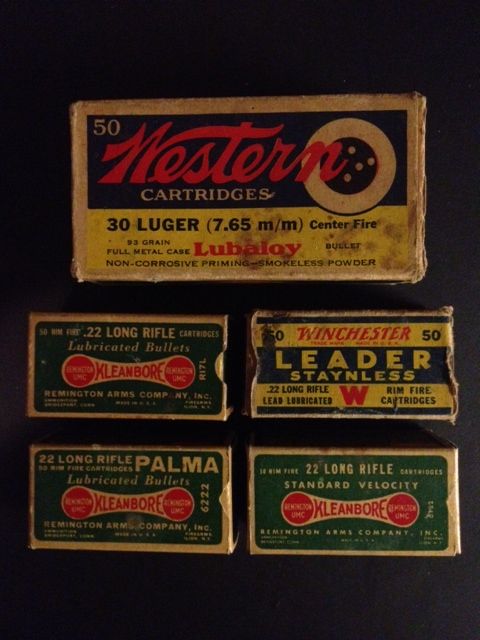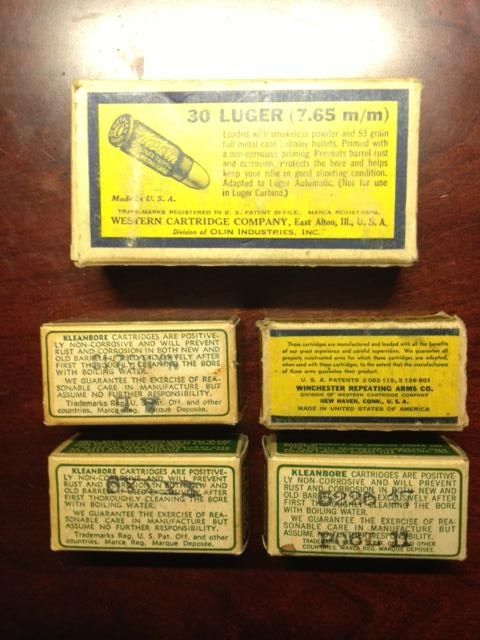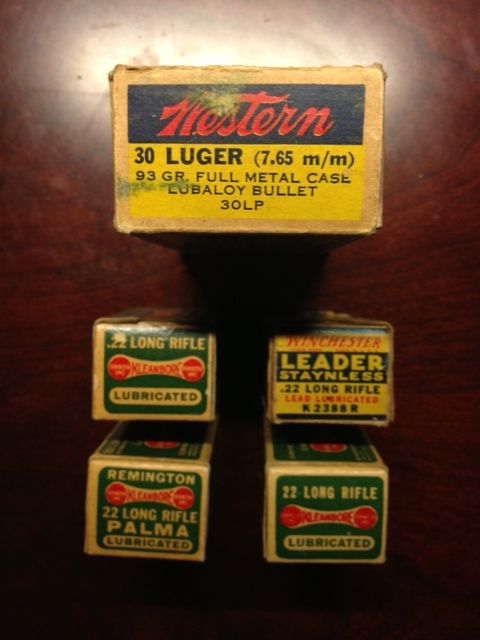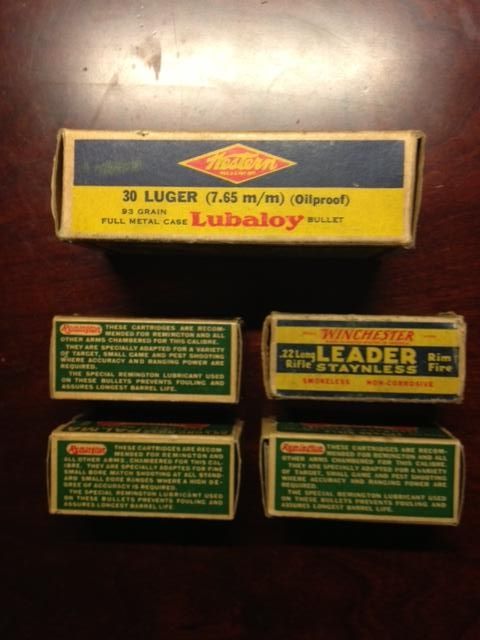spacecoast
New member
Anyone have an idea as to when these were made? From what I've been able to find online the Remington "dogbone" boxes might be from the 1930s.


Last edited:

Was commercial .30 Luger / 7.65 Parabellum ammo very common back then? It seems to me that it would have been a real specialty item.All are from the very late 1920s, but most likely the 1930s to 1940s given that all have non-corrosive priming.



